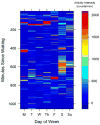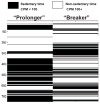Too much sitting: the population health science of sedentary behavior
- PMID: 20577058
- PMCID: PMC3404815
- DOI: 10.1097/JES.0b013e3181e373a2
Too much sitting: the population health science of sedentary behavior
Abstract
Even when adults meet physical activity guidelines, sitting for prolonged periods can compromise metabolic health. Television (TV) time and objective measurement studies show deleterious associations, and breaking up sedentary time is beneficial. Sitting time, TV time, and time sitting in automobiles increase premature mortality risk. Further evidence from prospective studies, intervention trials, and population-based behavioral studies is required.
Figures




Comment in
-
Medical hazards of prolonged sitting.Exerc Sport Sci Rev. 2010 Jul;38(3):101-2. doi: 10.1097/JES.0b013e3181e373ee. Exerc Sport Sci Rev. 2010. PMID: 20577056 No abstract available.
References
-
- Ainsworth BE, Haskell WL, Whitt MC, et al. Compendium of physical activities: an update of activity codes and MET intensities. Med Sci Sports Exerc. 2000;32(9 Suppl):S498–504. - PubMed
-
- Brown WJ, Bauman AE, Owen N. Stand up, sit down, keep moving: turning circles in physical activity research? Br J Sports Med. 2009;43(2):86–8. - PubMed
-
- Chastin SF, Granat MH. Methods for objective measure, quantification and analysis of sedentary behavior and inactivity. Gait Posture. 2009 in press. - PubMed
Publication types
MeSH terms
Substances
Grants and funding
LinkOut - more resources
Full Text Sources
Medical

